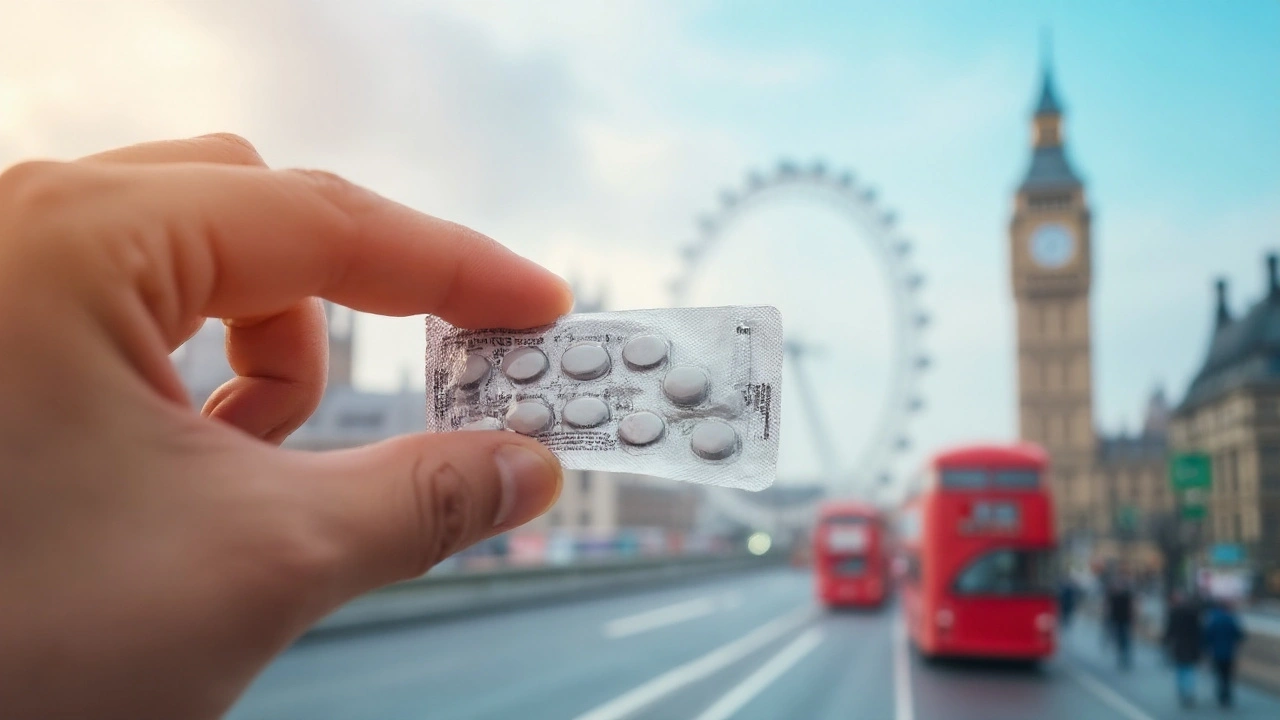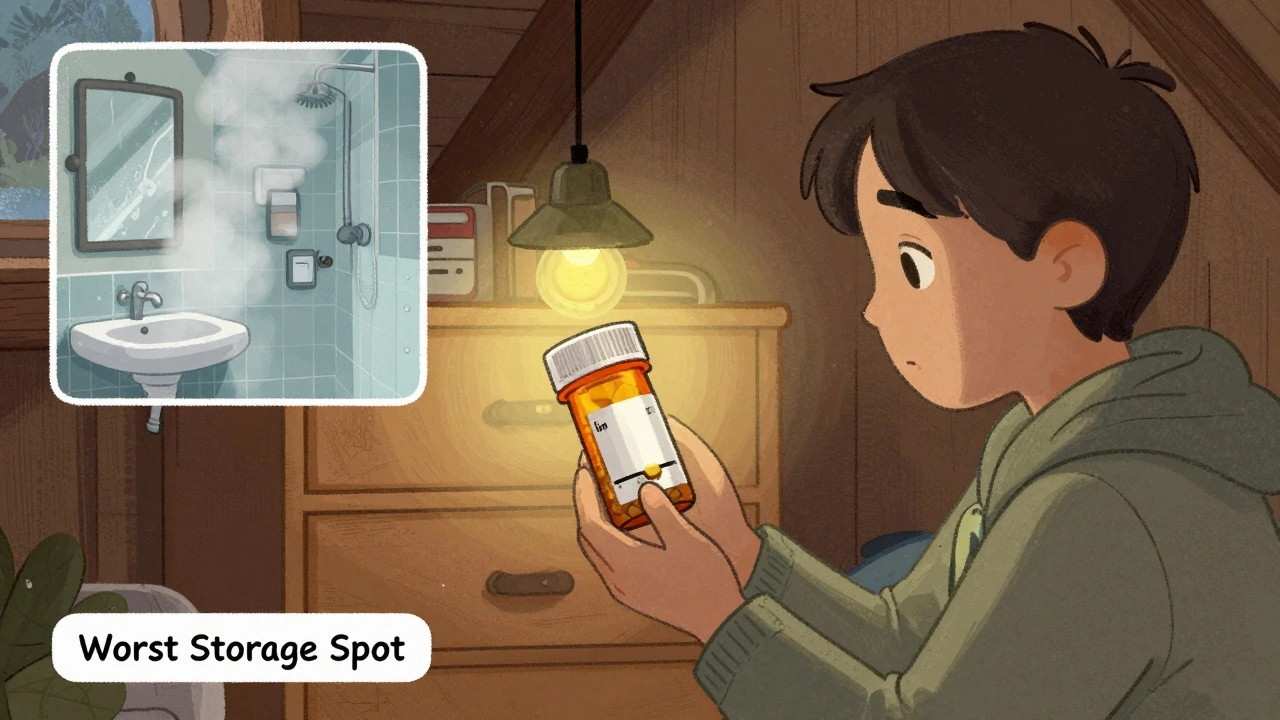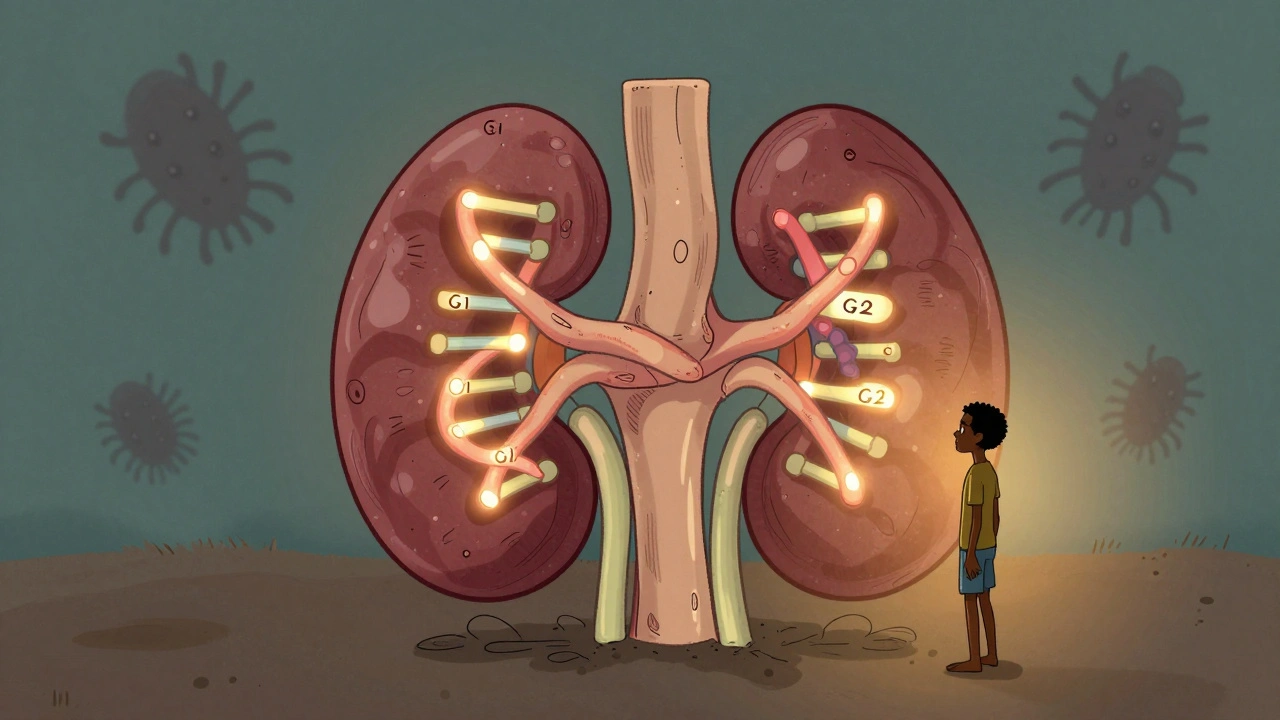You’d never guess that a soft, silvery metal could change lives and moods, but lithium does just that. It pops up in batteries, mood stabilizers, and even in tales about the early days of psychiatry. When experts talk about breakthroughs in mental health, lithium pretty much tops the list. Most people haven’t thought twice about this element since high school chemistry, but it’s quietly shaped psychiatry for over 70 years. And even though flashy new drugs come and go, lithium’s still the gold standard for bipolar disorder. There’s a reason your doctor might suggest it, even in 2025, when technology feels like it’s replacing everything with an app.
What Is Lithium and How Does It Work?
Let’s start with the basic stuff most people skip. Lithium isn’t just the stuff that keeps your wireless earbuds alive. The type used for mental health treatment is lithium carbonate or lithium citrate. When a psychiatrist mentions lithium, they’re talking about the prescription medication, not your phone battery. Lithium as a medication has saved lives, especially for folks with bipolar disorder. Scientists first stumbled on its use for mood disorders by accident—Australian psychiatrist John Cade, back in 1949, noticed caged guinea pigs chilled out after he gave them lithium salts. That accidental experiment set off a revolution in psychiatry.
The science is surprisingly mysterious, though. Nobody fully understands every twist and turn of how lithium works in the brain. What’s clear is that it somehow damps down wild mood swings. It helps by balancing chemical signals between brain cells. Lithium targets several neurotransmitters, like dopamine and glutamate, and might help grow new nerve cells, or at least keep them safe. That’s a pretty big deal, since bipolar disorder often comes with changes in brain wiring over time.
What makes lithium really unique is its power to prevent severe highs (mania) and crushing lows (depression). That’s why doctors often call it a “mood stabilizer.” Most antidepressants can make mania worse. Lithium is one of the few that can cover both sides of the mood spectrum.
Here’s a table showing common forms you might see:
| Lithium Form | Common Brand Names | How It’s Taken |
|---|---|---|
| Lithium Carbonate | Lithicarb, Lithane | Tablet, Capsule |
| Lithium Citrate | Priadel (UK) | Liquid |
Lithium is also unique because your doctor has to keep a really close watch on how much you’re taking and how much is in your blood. The “therapeutic window” is narrow: too little lithium doesn’t work, too much can be toxic. That’s why your doctor asks for regular blood work.
A few things change how your body handles lithium: how much water you drink, your kidney health, and even what else you’re taking. Did you know something as simple as a change in salt intake can throw off your lithium levels? That’s why GPs and psychiatrists go on and on about avoiding dehydration and watching your sodium.
If you’re wondering why lithium, a simple metal, helps with such a complex illness, you’re not alone. Scientists still debate if it’s the anti-inflammatory effect, the neuroprotective effect, or something else we haven’t found yet. But what’s not up for debate: lithium helps many people manage bipolar disorder like nothing else out there.
Conditions Treated with Lithium
Lithium’s biggest claim to fame is treating bipolar disorder. It’s the OG mood stabilizer, making episodes of mania and depression less frequent and less severe. If you look at major psychiatry guidelines, lithium’s always at or near the top—recommended for patients with classic bipolar disorder, especially if the mood swings are dramatic. In fact, some of the longest studies out there, like the STEP-BD trials, show that people on lithium have a lower risk of suicide compared to other mood stabilizers. That alone puts it in a special category.
But the story doesn’t end there. Some people with severe depression, especially those who don’t get relief from other treatments, can benefit from lithium (sometimes in combination with antidepressants). If you’re hearing about lithium “augmentation” for depression, that’s what it means. Doctors might also try lithium for schizoaffective disorder, certain aggressive behaviors, and occasionally for cluster headaches—yes, the kind that feel like someone’s stabbing your eye.
Lithium isn’t just a one-hit wonder. In Australia, as in the U.S. and the UK, it’s listed on government formularies as an essential medicine for major psychiatric conditions. It’s been used for generations for good reason—it really can make chronic, difficult-to-treat mood illnesses manageable in the long term. That’s a win for quality of life.
Here’s a quick list of conditions where lithium is typically used:
- Bipolar disorder (prevention and treatment of mania and depression)
- Treatment-resistant depression (as an add-on)
- Schizoaffective disorder
- Cluster headaches (rare cases)
- Sometimes in certain impulse control disorders
Doctors rarely use lithium for children or teens, but it’s sometimes prescribed if nothing else helps. Geriatric psychiatrists might prescribe lower doses for older adults, keeping a super close watch on kidney function.
It’s worth mentioning: lithium isn’t a quick fix. It takes at least a week or two to start working for mania, and up to several weeks for depression. That’s why doctors often start with another medication, like an antipsychotic, before lithium reaches its full effect.
And if you like data, here’s a number to chew on: Research from the Medical Journal of Australia showed that, in carefully monitored patients, lithium can reduce suicide risk by over 50%. That’s a pretty powerful stat in mental health.

Benefits and Unique Advantages of Lithium
Some medications treat symptoms. Lithium does more. Not only does it help manage mood swings, but it also has a reputation—backed by study after study—for reducing the risk of suicide in people with mood disorders. That effect is so solid that suicide prevention charities mention lithium in their briefings.
A lot of people ask why anyone still uses lithium when newer drugs keep hitting the market. The truth is, lithium delivers something special: it works for the long haul and doesn’t just mask moods. It makes future episodes less likely and lighter when they do show up. When you look at stats, lithium users have fewer hospital visits and better day-to-day function compared to folks on other mood stabilizers.
Here’s where it gets more interesting—lithium seems to protect the brain. MRI studies from the last decade, including some out of Melbourne, hint that people on lithium show less loss of grey matter over time. Translation: it might slow down some of the changes bipolar disorder can cause in the brain. That’s not just good treatment; that’s prevention at a whole new level.
Doctors also pick lithium because it’s tried and tested. The side effects may sound scary (more on that next), but they’re no worse than lots of other psych meds. And unlike newer “atypical” antipsychotics, lithium isn’t likely to pack on the kilos or mess with blood sugar the same way. For people who care about weight, that might tip the balance in lithium’s favour.
Let’s put some benefits in plain English:
- Controls both mania and depression—not just one side of bipolar disorder
- Reduces risk of relapse and rehospitalisation
- Unique anti-suicidal effect
- Doesn’t usually cause weight gain or diabetes (unlike some alternatives)
- Might protect brain structure against mood disorder-related changes
One practical plus: lithium is generic and cheap. That means it’s available even if you’re not rolling in private health insurance or living in a big city. Nearly every pharmacy can order it in Australia, and it’s on the PBS (Pharmaceutical Benefits Scheme), so prices are capped.
You do need to be steady with it. Missing doses or stopping suddenly can send moods spiraling—not fun. If you ever need to stop, talk to a doctor and taper slowly.
For people with kidney or thyroid issues, doctors might skip lithium, or just monitor extra closely. But if you want the math, around 60% of patients with classic bipolar disorder get a big benefit. No medication works for everyone, but lithium comes pretty close.
Possible Side Effects and What to Watch For
Let’s get real: lithium isn’t perfect. Like anything that actually works, it can come with a few trade-offs. The most common side effects? You might pee more, feel thirstier, get shaky hands, or spot some weight creeping on over time. Some people say their memory gets murkier or they feel a bit slowed down. Most of these go away or improve in a few weeks.
More serious side effects are rare if lithium levels are watched closely. Too much can be toxic—and that’s when things get risky. Signs of lithium toxicity include confusion, muscle twitches, trouble walking, vomiting, and in extreme cases, seizures. That’s why doctors harp on about regular blood tests, usually every 1-3 months at first, and then every 6-12 months once you’re steady.
Lithium has a habit of affecting the thyroid and kidneys. Years of use can sometimes lead to underactive thyroid or decreased kidney function. Most people never get those problems, but doctors play it safe with regular thyroid function tests, urine checks, and kidney blood tests. Other rare issues: skin breakouts, a metallic taste in your mouth, even hair getting thinner.
Some medications and health changes can bump up lithium to dangerous levels. Have a fever, get dehydrated after a hard workout, or decide to try a low-salt diet? That can change your lithium levels fast. So can adding blood pressure meds (like ACE inhibitors or diuretics). Always check with your prescriber before adding anything new—even over-the-counter painkillers like ibuprofen.
Quick cheatsheet: If you notice any new or nasty symptoms—vomiting, diarrhea that just won’t quit, sudden confusion, or muscle weakness—call your doctor. Waiting it out isn’t worth the risk.
Let’s look at a table summarizing side effect rates:
| Side Effect | How Common? |
|---|---|
| Thirstiness | More than 30% |
| Tremor (shaky hands) | About 25% |
| Mild weight gain | 10-20% |
| Underactive thyroid | Up to 10% long-term |
| Kidney changes | 2-5% over years |
Mild side effects can sometimes be tweaked by lowering the dose or spreading it out (twice daily dosing instead of once, for example). Always chat to your doctor if you run into anything that gets in the way of taking it regularly.
If you’re pregnant or planning to be, you’ll need a careful risk/benefit talk. Lithium is tied to a small risk of birth defects, especially in the first trimester. Some women decide to switch, some stay on it—with their doctor’s help. Breastfeeding is also a special case; lithium passes into breast milk, so paediatricians might say to avoid or monitor closely.

Tips for Staying Safe and Making the Most of Lithium Treatment
Managing medication can get fiddly, but a few habits make a big difference with lithium. The first rule: don’t skip blood tests. Keeping those levels “just right” is what keeps side effects away and your moods steady. Doctors usually check blood about 12 hours after your last dose—it’s not random.
Staying hydrated is critical, especially in an Aussie summer. Hot days, lots of exercise, or tummy bugs can throw your lithium balance out of whack, making toxicity more likely. If you get very unwell (fever, vomiting), check with your GP about whether to pause your lithium temporarily.
Salt matters. If you suddenly start or stop a low-salt diet, tell your doctor. The kidneys process lithium kind of like they handle sodium, so changes in salt intake can change your blood level of the drug. If you take new blood pressure tablets, especially diuretics, a dose check is needed.
Lithium interacts with a surprising number of other medications. Write a list of what you’re taking—including over-the-counter painkillers, herbal supplements, or vitamins—and keep your doctor in the loop before adding something new.
For day-to-day life, developing a med routine helps a lot. People often set alarms or link lithium doses to regular activities—like brushing your teeth or having breakfast. Missing doses can mean mood changes or blood level fluctuations.
Here are a few extra tips to keep life simple on lithium:
- Avoid dehydration by drinking regular water, especially in hot weather or during exercise.
- Stick to consistent daily routines for medication and meals.
- If you’re getting blood tests, aim for the same time of day and same lab if possible.
- Let all your healthcare providers know you’re on lithium—it helps them make safe decisions if you need surgery or new medications.
- Carry a medical alert card or wear a medic alert bracelet—this can save crucial time if you’re ever in an emergency.
- Check your supply before holidays. Pharmacy closures creep up quickly around Christmas and Easter.
- If you get new or weird symptoms that don’t go away, don’t wait—call your GP or psychiatrist.
There’s one more tip that’s easy to miss: self-advocacy matters. If side effects get in the way of work, relationships, or hobbies, speak up. Sometimes a simple tweak in timing or dose can smooth things out. Your doctor wants your treatment to be tolerable, not just effective.
Lithium, for all its quirks, remains one of the most effective mood stabilizers out there. Whether you’ve just been prescribed it or have been on it for years, staying informed and engaged is your best bet for making it work for you.







Gabrielle Vézina
August 4, 2025 AT 22:27It is astonishing how a humble metal can dominate the narrative of mental health while the world fixates on shiny gadgets. Lithium, the quiet sentinel, has been taming storms in the mind for decades. Its efficacy is not a fleeting trend but a steadfast promise etched in clinical trials. Yet the public remains blissfully unaware, scrolling past the very element that could write their rescue story.
carl wadsworth
August 6, 2025 AT 16:07Listen, the facts are clear: lithium saves lives and we should champion its accessibility. Don't let hype about newer pills distract you from the solid track record of this medication. If you're hesitant, ask your clinician for the data-they'll show you the survival curves. Let's keep the conversation grounded and push for policies that keep lithium affordable for everyone.
Neeraj Agarwal
August 8, 2025 AT 09:47Honestly the article got most of it right but there are a few tiny errors that need fixing. Lithium carbonate is the most common form, not "Lithicarb" as some brand lists might suggest. Also, the term “liqud” should be corrected to “liquid” when talking about lithium citrate. Small slip‑ups aside, the overall message is spot on.
Rose K. Young
August 10, 2025 AT 03:27Whatever, this guide is just a glorified ad for a drug with a scary side‑effect profile.
Christy Pogue
August 11, 2025 AT 21:07Hey folks! 🎉 If you’re reading this and thinking about lithium, remember you’re not alone on this journey. Millions have found stability and a brighter future thanks to this age‑old hero. Keep the faith, stay hydrated, and keep those appointments-your future self will thank you. Let’s spread the word and support each other! 🌟
Helena Pearson
August 13, 2025 AT 14:47Picture this: a metal atom, humble in appearance, yet it wields the power to reshape the very architecture of our thoughts. 🌌 Lithium doesn’t just calm the tempest; it rewires the synaptic pathways, a silent sculptor of the mind. Some may dismiss it as “old school,” but the empirical evidence shines brighter than any neon‑lit novelty drug. Its anti‑suicidal armor is a beacon in the darkest nights of bipolar disorder. Yet, like any alchemical agent, it demands respect-regular blood work, balanced salt intake, and vigilant monitoring. ⚖️ Ignoring these safeguards is tantamount to playing Russian roulette with your brain chemistry. So, embrace the science, honor the discipline, and let lithium be the steadfast keel in your emotional seas. 🚢
Patricia Fallbeck
August 15, 2025 AT 08:27Ah, the reverence for lithium is nothing more than a nostalgic clamor for the “golden age” of psychiatry. 🤔 One must ask whether the relentless devotion to this elemental relic stifles innovation rather than celebrates it. Perhaps it’s time to usher in a new era where we challenge the status quo and demand smarter, more refined solutions. 🌱
Brett Snyder
August 17, 2025 AT 02:07Look, we’re proud of our medical heritage, but glorifying any single drug without question is blind patriotism. Lithium has its place, sure, but it’s not the be‑all, end‑all for every mood disorder. The over‑reliance on it reveals a stagnant system that refuses to explore alternatives.
Nidhi Jaiswal
August 18, 2025 AT 19:47Lithium is effective but not perfect it can cause thyroid and kidney issues and needs regular monitoring
Sunil Sharma
August 20, 2025 AT 13:27Hey everyone, just a quick reminder to keep a consistent routine when taking lithium-same time each day, plenty of water, and don’t forget those follow‑up labs. If you’re ever unsure about a new supplement or medication, chat with your doctor first. Staying proactive helps keep the treatment smooth and safe.
Leah Robinson
August 22, 2025 AT 07:07Got it, Sunil! 🙌 I set an alarm on my phone for my pills and keep a water bottle handy. It’s the little habits that make a big difference. 💧
Abhimanyu Lala
August 24, 2025 AT 00:47Lithium may be old but its power is still fierce it can tame the wildest mood swings like a thunderstorm silenced.
Richard Sucgang
August 25, 2025 AT 18:27The discussion often overlooks the nuanced pharmacodynamics of lithium its modulation of second messenger systems is profound yet underappreciated.
Russell Martin
August 27, 2025 AT 12:07Stay on top of those blood tests folks-they’re the key to keeping lithium safe and effective!
Jenn Zee
August 29, 2025 AT 05:47It is an ethical imperative, not merely a medical recommendation, that we scrutinize the pervasive complacency surrounding lithium therapy. Society has grown accustomed to the notion that once a patient is prescribed this ancient element, the journey ceases, and no further moral responsibility remains. Yet the reality is starkly different; the responsibility for vigilant monitoring does not dissolve upon the act of prescription. The healthcare system, in its bureaucratic inertia, often relegates the patient’s ongoing safety to a perfunctory appointment schedule, thereby abdicating a deeper covenant of care. Moreover, the casual public discourse, saturated with anecdotes of “miraculous recoveries,” obscures the sobering incidence of renal impairment and hypothyroidism that accompany chronic use. One must question whether the allure of lithium’s anti‑suicidal properties justifies a systemic neglect of its long‑term physiological toll. The moral calculus demands a balanced appraisal, integrating both the salutary and the deleterious facets of treatment. Additionally, the very language employed in medical literature tends to sanitize the gravity of side effects, preferring euphemisms that dilute patient awareness. This linguistic softening is a disservice, fostering a veneer of safety that belies the harsh clinical reality. Ethical stewardship requires that practitioners convey the full spectrum of risks with uncompromising clarity. Patients, empowered with such knowledge, can engage in truly informed consent, a cornerstone of respect for autonomy. The broader community, too, bears responsibility to dispel myths and champion transparency. In the age of digital information, the onus falls upon us to correct misinformation with diligence. Failing to do so perpetuates a dangerous mythos that valorizes convenience over conscientious care. Let us, therefore, commit to an ethos of rigorous oversight, relentless education, and unwavering advocacy for those whose lives hinge upon the delicate balance of lithium’s therapeutic promise and its inherent hazards.
don hammond
August 30, 2025 AT 23:27Wow, Jenn, thanks for the epic novel-who needs a quick read when we can have a saga? 😂